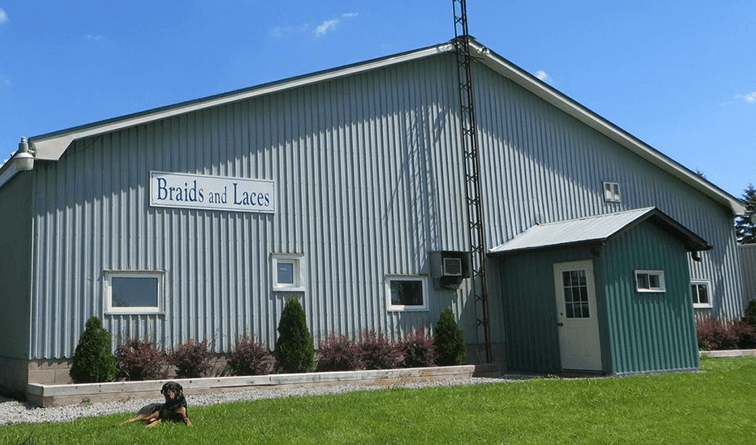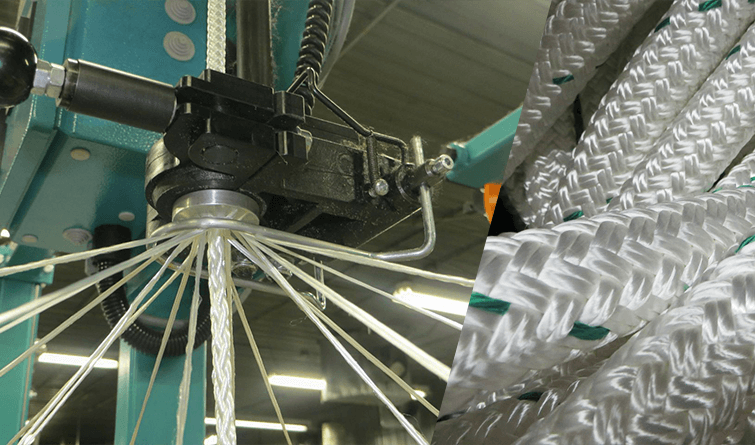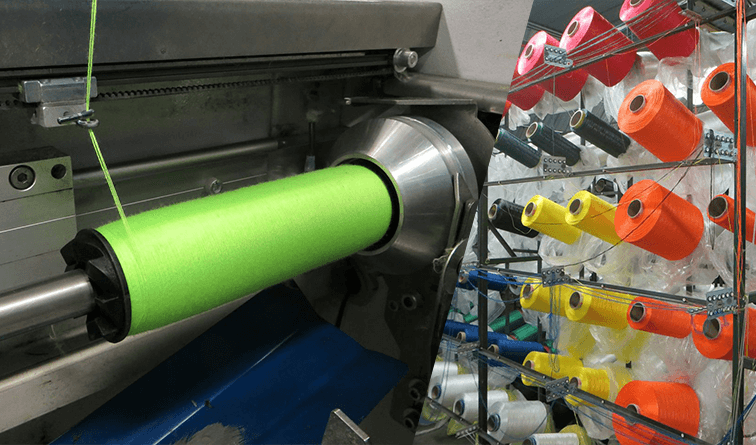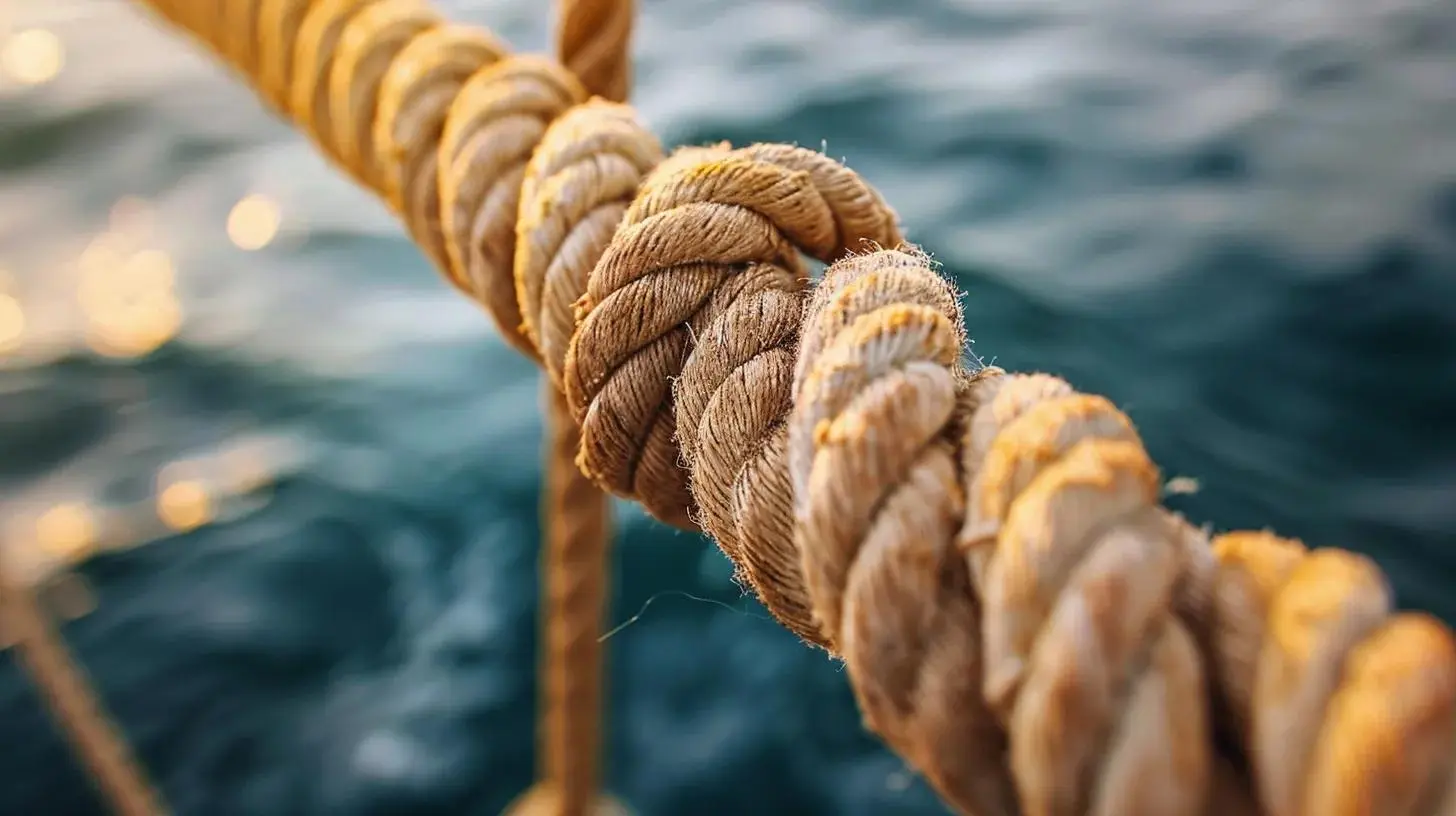Identifying Safety Risks: The Dangers of Using Incorrect Rope Types in Various Applications
October 10, 2025
Using the wrong rope type can trigger sudden breakage, snap-back, and uncontrolled loads that threaten lives and equipment. By exploring what are the common safety risks associated with using the wrong type of rope, this guide reveals hidden hazards in industrial, marine, climbing, and agricultural settings. Readers will learn how improper selection undermines tensile strength, how environmental factors accelerate wear, and which safety standards govern inspections. This article maps out five key themes—general risks, rope-type impacts, failure causes and prevention, selection guidance, and regulatory compliance—to equip professionals with actionable insights.
Whether rigging heavy loads, securing a vessel, or relying on dynamic climbing lines, every application demands a rope matched to its load, environment, and safety factor. Misjudging tensile capacity or ignoring UV and chemical exposure leads to catastrophic rope failure. Practical examples from construction sites and alpine expeditions illustrate why material properties matter. Planning proper rope choice and maintenance not only prevents injuries but also minimizes downtime and equipment damage.
What Are the Common Safety Risks of Using the Wrong Rope Type?
Selecting an incorrect rope introduces a host of safety risks, defined by mismatched strength, poor abrasion resistance, and vulnerability to environmental degradation. Insufficient breaking strength under load can cause immediate snap-back injuries. When abrasion resistance is low, ropes fray rapidly against rough surfaces and edges. Chemical exposure further weakens fibers, increasing the chance of sudden failure.
Incorrect Rope Selection Leads to Rope Failure
Incorrect rope selection causes failure when load requirements exceed the rope’s working load limit. A rope rated below the applied force will stretch excessively or break outright under peak loads. In dynamic situations, such as lifting or fall arrest, low-elongation ropes compound shock loading, transmitting force spikes directly to anchors. Real-world incidents demonstrate that even slight mismatches in rope class lead to immediate structural collapse.
Consequences of Rope Failure in Different Industries
Rope failure in industrial rigging can result in dropped loads, worker injuries, and costly equipment repairs. In marine settings, a failed mooring line risks drifting vessels and collisions. Climbers facing a snapped dynamic line face falls and potential fatalities. Agricultural applications confront halted harvesting machinery and damaged bales when tying ropes give way under tension.
Environmental Factors That Increase Rope Safety Risks
Ultraviolet radiation degrades polymer chains, reducing tensile strength and making ropes brittle. Chemical agents like acids or solvents attack fiber integrity, causing localized weak spots. Abrasion from rough surfaces abrades sheath fibers, exposing cores to moisture and rot. High humidity and salt spray accelerate mildew and corrosion, compounding the risk of sudden failure.
How Do Different Rope Types Affect Safety in Various Applications?
Rope types vary in material composition and mechanical behavior, influencing safety across applications. Synthetic ropes such as nylon and polyester deliver high tensile strength and controlled elongation, making them ideal for shock absorption and repeated dynamic loading. Natural-fiber ropes offer cost-effective handling but sacrifice durability under UV and moisture. Wire ropes boast exceptional breaking loads yet demand meticulous corrosion protection and inspection.
Comparison of Rope Types and Their Safety Characteristics
| Rope Type | Key Safety Characteristics | Durability & Environmental Factors | Typical Applications |
|---|---|---|---|
| Synthetic (Nylon, Polyester) | High tensile strength, controlled elongation, excellent shock absorption (Nylon), consistent diameter under load (Polyester), high abrasion resistance. | Good UV and moisture resistance (Polyester better than Nylon), extended service life in rough conditions, predictable elongation. | Dynamic lifts, shock absorption, towing, mooring lines, climbing (dynamic ropes). |
| Natural Fibre (Manila, Sisal) | Moderate tensile capacity, limited elongation (prone to snap-back), lower breaking strength. | Poor UV resistance, moisture absorption leads to rot and strength loss, requires frequent replacement in critical roles. | Light-duty tasks, decorative uses, temporary securing (not safety-critical). |
| Wire Ropes | Unmatched breaking strength, minimal stretch, essential for heavy-duty loads. | Demands meticulous corrosion protection (lubrication, plating), susceptible to fatigue cracking, requires regular inspection for broken strands. | Heavy-duty hoisting, industrial rigging, structural support. |
Synthetic Fiber Rope Technology: Mechanical Behavior and Engineering Applications
Review of synthetic fiber ropes, 1970 Although fiber ropes are among the oldest products manufactured by man, little is known about their mechanical behavior and the factors that influence it. The manufacture of ropes and their use in various fields rely largely on accumulated experience, inherited and improved over many centuries of use. However, their general use did not involve rigorous scientific and engineering analysis until relatively recently. With the introduction of synthetic fibers and new rope constructions over the last 30 years, as well as many new applications of ropes in engineering systems, scientific methods are increasingly necessary to describe and predict the mechanical behavior of ropes in general, and synthetic fiber ropes in particular. This manual will provide up-to-date information on the work done to establish what might be called the physics of ropes or the mechanics of ropes. The objective is to make fiber ropes engineering tools with a predictable mechanical response to applied forces and stresses, as well as environmental conditions. The manual begins with an introduction to the basic characteristics of ropes, explaining them as mechanical models and textile structures. The mechanical properties of ropes, such as strength, weight, and breaking length, are then explained, with particular attention to the fact that fiber ropes elongate considerably under applied loads and thus absorb mechanical energy. The reaction of ropes to loading and elongation during use is then discussed.
Safety Characteristics of Synthetic Ropes Like Nylon and Polyester
Nylon ropes provide superior elasticity and shock absorption, reducing peak forces in dynamic lifts. Polyester ropes resist UV and moisture better, maintaining consistent diameter under load. Both exhibit high abrasion resistance, extending service life in rough conditions. Their predictable elongation profiles minimize sudden energy spikes during load shifts.
Safety and Durability of Natural Fibre Ropes
Manila and sisal ropes offer moderate tensile capacity and limited elongation, making them prone to sudden snap-back under overload. Moisture absorption leads to rot and significant strength loss over time. Natural fibres lack UV stabilizers, causing rapid degradation in sunlight. While suitable for light-duty or decorative uses, they demand frequent replacement in safety-critical roles.Safety Considerations for Wire Ropes in Industrial Use
Wire ropes deliver unmatched breaking strength and minimal stretch, essential for heavy-duty hoisting and rigging. Corrosion protection through lubrication and plated wires prevents fatigue cracking. Regular inspection for broken strands, kinks, and corrosion spots is mandatory. Maintenance routines must include cleaning, lubrication, and tension adjustment to preserve rope integrity.
What Are the Key Causes of Rope Failure and How Can They Be Prevented?
Rope failure stems from overloading, shock loading, abrasion, UV and chemical damage, and improper knotting. Overloading beyond the working load limit overstresses fibers, while sudden dynamic forces amplify tension peaks. Abrasion against edges wears down protective sheaths, exposing cores to environmental harm. UV and chemical exposure degrade fiber structure, and incorrect knots reduce strength by up to 50 percent.
Common Causes of Rope Failure and Prevention Strategies
| Failure Cause | Impact on Rope Safety | Prevention Strategy |
|---|---|---|
| Overloading | Exceeds rated capacity, causing permanent deformation or outright breakage. | Adhere strictly to Working Load Limits (WLL), use appropriate rope for the load. |
| Shock Loading | Rapid application of force, producing tension spikes that can cause instant failure. | Use energy-absorbing connectors, dynamic ropes for fall arrest, avoid sudden jerks. |
| Abrasion | Wearing down of protective sheaths and core fibres against rough surfaces/edges. | Use edge protection, inspect regularly, choose ropes with robust sheaths. |
| UV & Chemical Damage | Degradation of polymer chains/fiber integrity, leading to reduced strength and brittleness. | Store ropes in cool, dry, shaded areas; clean after chemical exposure; select UV/chemical-resistant materials. |
| Improper Knotting | Concentrates stress, reduces overall rope strength significantly, can lead to slippage. | Use appropriate knots (e.g., figure-eight, bowline), ensure knots are properly dressed, provide training in knot selection. |
Overloading and Shock Loading Compromise Rope Safety
Overloading applies force that exceeds the rope’s rated capacity, causing permanent deformation or breakage. Shock loading—rapid application of force—produces tension spikes well above static limits. Ropes under shock load can fail instantly without warning. Adhering to working load limits and using energy-absorbing connectors mitigate these dangers.
Proper Knotting is Critical to Rope Strength and Safety
Knots concentrate stress at bends, reducing overall rope strength by altering fiber alignment. Certain knots, like figure-eight or bowline, preserve more strength, while others can halve it. Inappropriate knot choice or poor dressing leads to slippage and catastrophic failure. Training in knot selection and technique ensures maximum load-bearing capacity.
Preventing Rope Failures Through Regular Inspection and Maintenance
Routine inspections identify fraying, broken strands, kinks, and corrosion before they cause failure. Cleaning ropes after exposure to chemicals or saltwater removes damaging residues. Proper storage in dry, cool, and shaded environments prevents UV and mildew damage. Scheduled retirement of ropes after a defined service life guarantees safety margins.
How Can You Choose the Right Rope for Safety in Specific Applications?
Selecting the right rope requires matching material properties to load type, environmental exposure, and application dynamics. Industrial lifting demands wire or high-strength synthetic ropes with precise elongation control. Marine operations benefit from UV-resistant polyester or nylon lines. Climbing and rescue require dynamic ropes that absorb fall energy, while static lines suit hauling and fixed-rope work.
Rope Types Best Suited for Industrial Lifting and Rigging
Wire ropes excel in heavy-load hoisting, combining minimal stretch with high breaking strength. Synthetic alternatives like polyester offer lighter weight and corrosion resistance, reducing handling hazards. Choosing between them depends on load weight, frequency of cycles, and environmental conditions. Certified slings and connectors must match rope specifications.
Recommended Ropes for Marine and Climbing Applications
In marine use, polyester ropes resist saltwater and UV damage, maintaining low stretch under constant tension. Nylon ropes absorb dynamic loads on towing or mooring lines. Climbers rely on dynamic kernmantle ropes designed to stretch under fall impact, reducing shock forces on anchors. Static ropes, with minimal elongation, support hauling and rescue rigging.Influence of Application Environment on Rope Material Choice
Chemically aggressive environments demand acid- and alkali-resistant fibers or wire with protective coatings. High-humidity or saltwater conditions favor synthetic materials over natural fibres. Abrasive settings require ropes with robust sheaths and core-sheath constructions. Temperature extremes influence rope elasticity and brittleness, guiding material selection.
What Safety Standards and Regulations Govern Rope Use and Inspection?
Rope safety relies on compliance with authoritative standards that define strength, testing, and inspection protocols. OSHA governs industrial lifting and slings, mandating working load limits, regular inspections, and personnel training. ISO sets international benchmarks for fiber rope properties and testing methods. Climbing ropes adhere to UIAA and EN certifications to ensure dynamic performance and durability.
Key Rope Safety Standards and Regulations
| Standard/Regulation Body | Primary Focus | Key Requirements/Applications |
|---|---|---|
| OSHA (Occupational Safety and Health Administration) | Industrial lifting, slings, worker safety. | Mandates WLL, durable identification tags, visual inspections before each use, monthly inspections for wire ropes, personnel training. |
| ISO (International Organization for Standardization) | International benchmarks for fiber rope properties and testing. | ISO 2307 outlines tensile testing procedures and performance classes for fiber ropes. |
| UIAA (International Climbing and Mountaineering Federation) & EN (European Norms) | Climbing and rescue rope safety, dynamic performance. | UIAA: Dynamic energy absorption testing, fall rating verification, diameter consistency. EN: Strength thresholds, sheath abrasion resistance classes. Both required for professional climbing. |
| Canadian Rope Safety Regulations | Occupational health and safety, alignment with international standards. | Requires documented inspection routines, operator training, adherence to WLL, manufacturers to supply technical data sheets compliant with national regulations. |
OSHA and ISO Requirements for Industrial Rope Safety
OSHA regulations require slings and wire rope assemblies to carry durable identification tags, specify working load limits, and undergo visual inspections before each use. Wire ropes must be inspected monthly for broken wires, corrosion, and kinks. ISO 2307 outlines tensile testing procedures and performance classes for fiber ropes. Adhering to both sets standards protects workers and equipment.
Application of UIAA and EN Standards to Climbing Rope Safety
UIAA certification demands dynamic energy absorption testing, fall rating verification, and diameter consistency for climbing ropes. EN standards define strength thresholds and sheath abrasion resistance classes. Only ropes meeting both UIAA and relevant EN norms qualify for professional climbing and rescue operations.
Canadian Rope Safety Regulations
Canada’s regulations align with ISO and EN standards while incorporating local occupational health guidelines. Federal and provincial authorities require documented inspection routines, operator training, and adherence to working load limits. Manufacturers must supply technical data sheets in compliance with national chemical and materials regulations.
Using mismatched ropes exposes people and assets to serious hazards, but understanding rope types, failure causes, and industry standards empowers safer choices. Regular inspection, proper selection, and adherence to regulatory requirements form the core of any rope safety program.
Ensure Uncompromising Safety with Braids & Laces Limited
Don’t compromise on safety when it comes to critical applications. At Braids & Laces Limited, we specialize in providing a comprehensive range of high-quality ropes, braids, and laces meticulously engineered to meet the most stringent safety standards across industrial, marine, climbing, and agricultural sectors. Our products are designed for reliability and durability, offering superior tensile strength, UV resistance, and specialized solutions for heavy-duty rigging.






